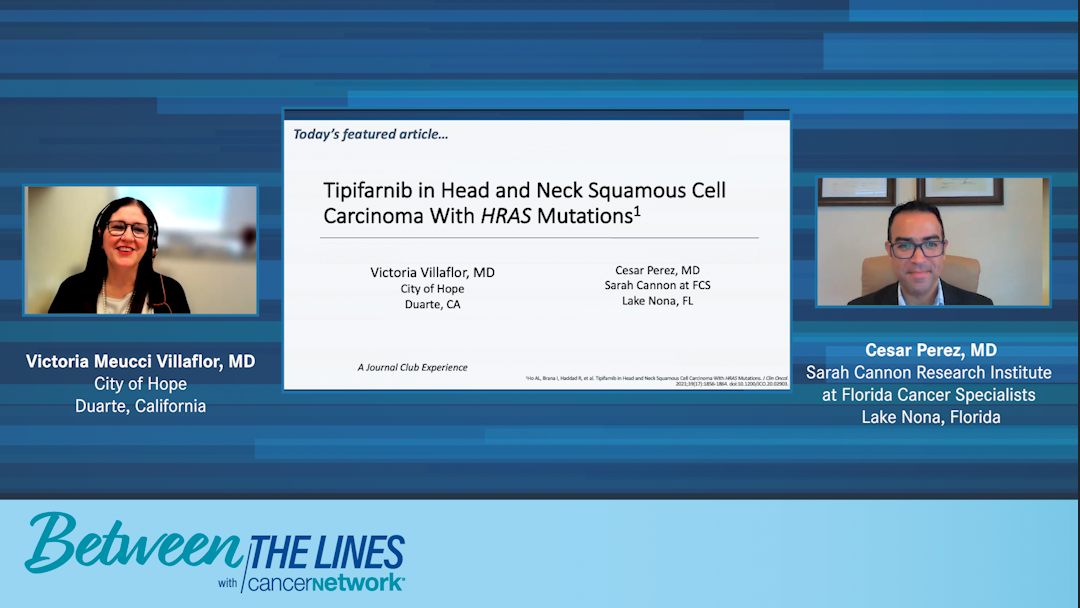
HNSCC: Integrating Tipifarnib Into Treatment Algorithms

Potential implications of ongoing studies evaluating tipifarnib for patients with HRAS-mutated head and neck squamous cell carcinoma.
Victoria Meucci Villaflor, MD: What do you feel are the potential clinical implications of this study?
Cesar Perez, MD: For a small population, it’s very promising. Obviously, it would be ideal if a larger population could benefit from this drug. In that setting, can we use it in combination with another agent? Can patients with HRAS mutations with high allele frequency use it with cetuximab? That doesn’t really have overlapping toxicities. You have some of the electrolyte abnormalities, but not that many. There are a lot of potential implications, and the first step is to study it as a single agent in a larger population to understand a little more about the HRAS and acquired resistance, as you mentioned, and how we can combine this with other agents without causing a lot more toxicity. Those are some questions that will arise eventually. As far as the clinical implications, if the findings are replicated in a larger study, hopefully this will move into the clinic soon.
Victoria Meucci Villaflor, MD: The important next steps are going to be a larger study on a bigger scale, and development of finding the resistance mechanisms and trying to figure out how we can overcome those. What are your thoughts, Cesar?
Cesar Perez, MD: We have to better understand the pathway. We have been studying HRAS and all the RAS pathways in head and neck cancer for a couple of decades, but it wasn’t until now that they caught it. Now that they have these data, we should at least clinically try to understand a little better. We have better technology than 20 years ago. We have better sequencing now. You can develop combination trials, as mentioned before. Once you understand it, it could prolong the duration of response in these patients. Maybe a stronger farnesyltransferase inhibitor can remain effective for a longer period, as they did with osimertinib replacing the first-generation EGFR inhibitors in lung cancer. Hopefully that’s how it will go.
Victoria Meucci Villaflor, MD: As far as clinical pearls—Dr Perez, add to this if you think necessary—this gives us the impetus to maybe start looking at our patients’ molecular profiles when they come in with metastatic and recurrent disease, consider putting them on clinical trials, and try to develop more of these targeted agents. This is the only one we have that’s based on the patient’s molecular fingerprint at this time, and I’m hoping there are more to come down the road.
Cesar Perez, MD: I feel the same way. Now we can rediscover the molecular profiling of head and neck squamous cell carcinoma. Now we at least have some value on it, and hopefully we can extend it to some other abnormalities and try to target these abnormalities a little better.
Victoria Meucci Villaflor, MD: Dr Perez, I want to thank you for joining me in this discussion regarding HRAS-mutated head and neck cancers. And I hope you, the viewer, enjoyed this Between the Lines, a Journal Club Experience. Thank you for tuning in.
Transcript edited for clarity.
Newsletter
Stay up to date on recent advances in the multidisciplinary approach to cancer.


















































































